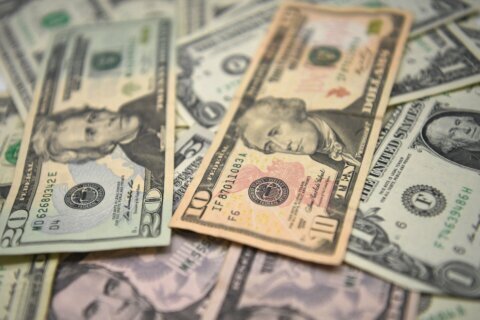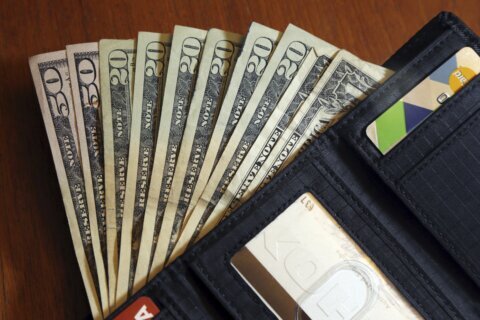Each spring, millions of Americans come down with a fever that has nothing to do with allergies or winter restlessness. Rather, we’re gripped by college-hoops hysteria as the country’s 68 best amateur teams square off in a 67-game, single-elimination basketball free-for-all with a national title at stake.
March Madness season will run from March 17 through April 3 this year. And it’s expected to be most pronounced in the 14 cities playing host to the 2017 NCAA Men’s Basketball Tournament, particularly Phoenix, where the Final Four and championship games will be held. But its effects certainly will be felt nationwide, seeing as more brackets will likely be completed than votes were cast for any individual candidate in the November election.
This affliction poses no real threat to the general public, provided fans don’t drink and drive. But March Madness can take quite a toll on our wallets. We’ll highlight a few of the most notable ways with the following March Madness financial fun facts.
[See: 6 Ways to Treat Yourself on a Budget.]
1. $2.2 billion in lost productivity: Data from a 2012 MSN survey showed that more than half (56 percent) of all U.S. workers planned to spend at least one hour on March Madness-related activities, from filling out brackets to streaming games. The average private-company employee pulls in about $26 per hour, according to the latest available data from the Bureau of Labor Statistics. And there are approximately 151.6 million people with jobs in the U.S., according to the BLS.
Put all of that together, and you’ve got at least 84.8 million wasted hours of work, with an overall price tag of about $2.2 billion in lost productivity.
2. $457 million in gambling losses: Patrons of Nevada sports books wagered a record $422.2 million on basketball in March 2016, according to the Nevada Gaming Control Board, which noted that roughly 70 percent of the action was on the NCAA men’s basketball tournament. That’s about $295.6 million. And given that sports books won 5.1 percent of their basketball bets, March Madness cost Nevada gamblers around $15 million on the tournament.
But since legal wagers represent only 3.3 percent of the roughly $9.2 billion bet on the big dance last year, total losses could amount to as much as $456.8 million, assuming the Nevada win rate holds true nationally.
[See: 12 Ways to Be a More Mindful Spender.]
3. $1.98 billion in beer: U.S. breweries produced 17,010,910 barrels of beer last March, which represents an increase of 8.2 percent over the average month in 2016. There are 128 fluid ounces in a gallon and 31 gallons in a barrel, or 3,968 ounces per barrel. And the average retail price for a 12-ounce beer was $4.65 last year, according to GoEuro’s analysis of restaurant and bar sales in six of the largest cities in the United States. So, that works out to an extra $1.98 billion spent on beer last March.
Of course, March Madness isn’t all about basketball, at least as far as beer is concerned. St. Patrick’s Day, one of the year’s five most popular drinking days, certainly contributed to the extra production. But that’s just one day, while the tournament goes on for weeks.
4. $3,400 on tickets: The priceless memories gained by following your favorite team from the first round through a magical title run will cost you a pretty penny. Last year, all-sessions passes to each round of the tournament cost an average of $3,395 in total, according to TiqIQ:
— First and second rounds: $859
— Sweet 16 and Elite Eight: $574
— Final Four: $1,052
— Championship: $910
[Read: 10 Ways to Host Your Tailgate Party on a Budget.]
Finally, we can’t forget the players and coaches who supply all the action and spur our spending. The average college basketball player receives an athletic scholarship of roughly $38,246 per year, according to ScholarshipStats.com. And while USA Today’s 2011 estimate of $120,000 per year in goods, services and future basketball-related earnings is far higher, it still doesn’t even compare to what college coaches and NBA rookies rake in.
There are 38 men’s college basketball coaches who make more than $1 million per year, with the five highest paid earning an average of $5.6 million annually. And according to the league’s rookie pay scale, the average NBA first-round draft pick earned roughly $1.99 million.
Unfortunately for those who side with the students in the debate over whether college athletes should be paid, we’ll have to wait until at least next March to see if this compensation-gap madness changes in any way.
More from U.S. News
12 Millennial-Inspired Ways to Spend Less
10 Fun, Frugal Ways to Spend Your Free Time
12 Ways to Be a More Mindful Spender
March Madness Financial Facts: Here’s What Our Basketball Fandom Costs Us originally appeared on usnews.com







